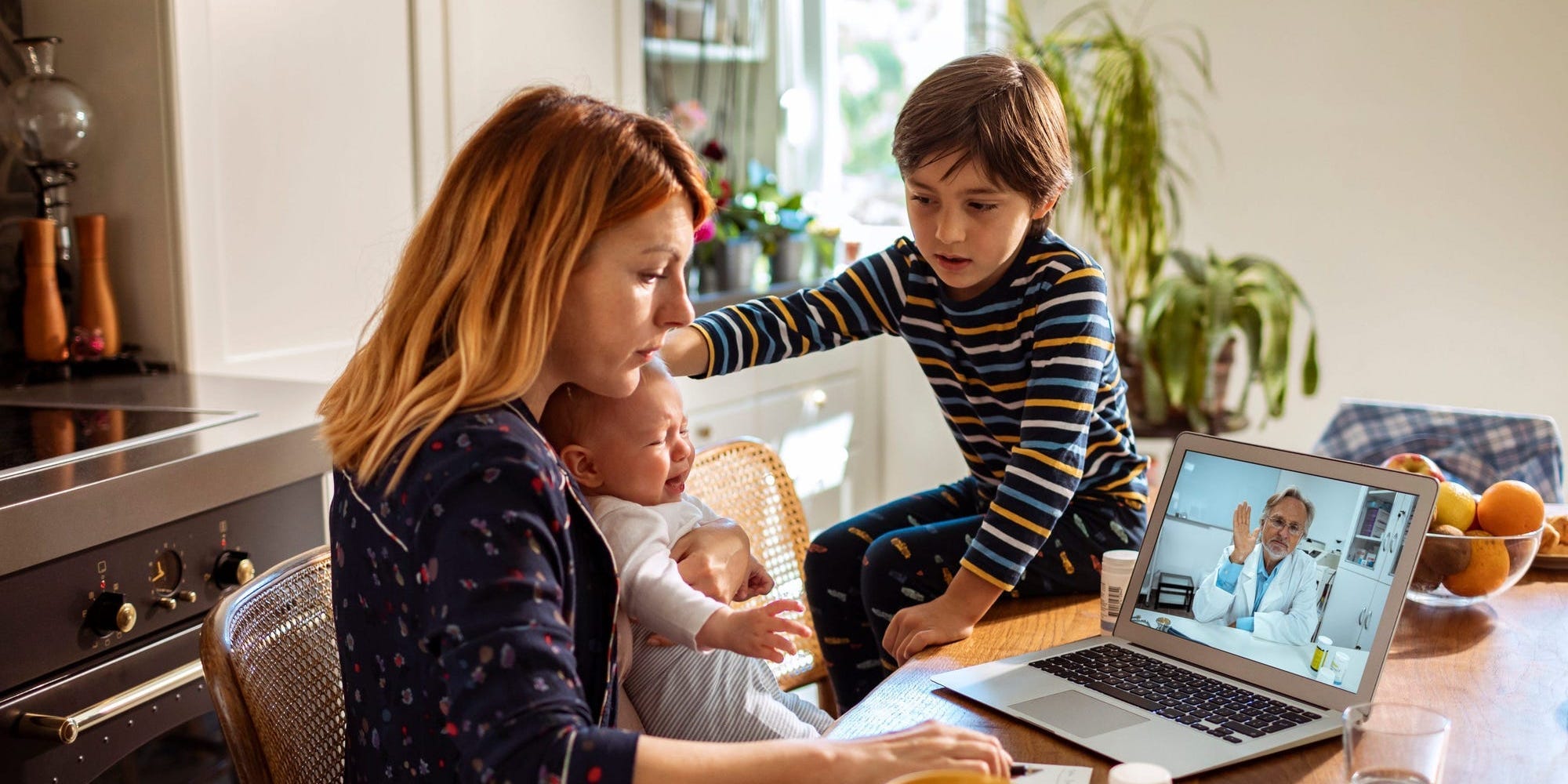

- MetroHealth quickly pivoted to telehealth to care for its diverse patient population in response to the pandemic.
- As restrictions ease, telehealth remains an important service for overcoming barriers to routine outpatient care.
- Technology is also allowing some inpatient care to move to the home, helping create a hybrid model.
- This article is part of the "Healthcare Innovation" series, highlighting what healthcare professionals need to do to meet this technology moment.
MetroHealth, a community hospital in Cleveland, Ohio, quickly ramped up its telehealth program for routine office visits and a Hospital at Home program to free up inpatient beds in response to the COVID-19 pandemic in 2020. As the pandemic continues to change, the health system is expanding these services to better reach and care for its diverse patient population.
"We flipped to doing pretty much all telehealth visits back in March of last year," said Dr. David M. Margolius, division director of internal medicine. Before that, primary care providers had a goal of increasing virtual visits from about 5% of all patient appointments to about 10%.
The health system offered its doctors training and support to help with the transition from a mostly in-person care model to a model heavily relying on virtual care, Albert Ferreira, director of telehealth operations at MetroHealth, said. Doctors have also continuously conferred with each other on how to best integrate telehealth into routine care, said Margolius.
In 2020, MetroHealth conducted about 480,000 telehealth visits across the system. Providers have conducted about 217,000 so far in 2021. As pandemic restrictions are easing, Margolius expects about one-third of primary care appointments to be conducted virtually, whether over video conference or the telephone. Notably, chronic conditions affecting the local community such as diabetes, high blood pressure, and obesity can be readily managed through telehealth.
Overcoming barriers to care
Telehealth is patient-centered, convenient, and often a better way to access care for patients who might have difficulty scheduling in-person visits because of commitments to work or to childcare, Margolius said. Doctors found telephone visits to be particularly accessible for patients, especially those below the poverty line and receiving Medicaid.
The no-show rate for appointments has dropped from roughly 25% to 5% or less with telehealth visits. Additionally, 18 months into the pandemic, MetroHealth's population health quality data for system goal measures has never been better, Margolius said. For example, before the increased use, 36% of patients with diabetes were not controlling their A1C levels compared to 31% today.
"Telehealth has allowed us to overcome traditional barriers to in-person care, and we're seeing a lot of benefits and value for our patients and our providers in ways that could not be accomplished with in-person care," said Ferreira.
Training and support for healthcare providers
Many clinicians and operational staff weren't accustomed to telehealth technology initially because nearly all healthcare delivery is based on an in-person care model. Ferreira and his team created online training videos showing how to use specific technology such as video conferencing platforms, including those compatible with the patient portal MyChart.
Another important area of training is how to show support, empathy, and compassion through virtual visits - whether doctors need to make more eye contact on a video conference or emphasize verbal empathy on the phone. "Patients still want that one-on-one relationship with their care team providers," said Ferreira.
Technology helps move inpatient care to the home
In March of 2020, MetroHealth, also expanded its Hospital at Home program to help care for COVID-19 patients. The program consists of monitoring device kits with provider and patient tablets, connectivity, webcams, and Bluetooth-enabled blood pressure cuffs, thermometers, pulse oximeters, glucometers, spirometers, and other items that patients are taught to use in the comfort of their own homes.
"Last year, if there were 20 patients in the hospital with COVID-19, we would have another five patients in the Hospital at Home program," Dr. Nicholas J. Dreher, director for the MetroHealth Population Health Innovation Institute, said. The program helped free up hospital beds so doctors could care for people with severe Covid or other conditions such as heart disease.
While phase one of the program consisted of mostly COVID-19 patients, phase two, which was implemented in August, also includes patients with conditions such as recurrent heart failure, mild to moderate pneumonia, skin infections, and chronic obstructive pulmonary disease. While all provider visits with the program were virtual last year, phase two includes the option of one in-person doctor visit and two in-person nurse visits daily, which allows for services such as phlebotomy, X-rays, or administering intravenous medications.
While training for the program is available for doctors so they know how to use virtual health tools, the success of the program largely hinges on patient selection, which involves input from nurses, emergency room managers, and other healthcare providers who are involved in the hospital admission process. "If we pick the right low acuity patients who need higher monitoring and daily provider input, but don't need the hospital bed, the program can run smoothly," said Dreher.
Ultimately, MetroHealth is trying to "better serve the underserved with technology," Dreher said. "We want to do what's right for our patients."
